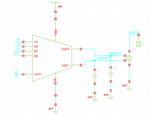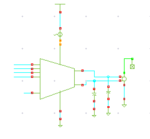deveshkm
Member level 4
Hi,
I had connected the FDDA in unity gain feedback mode and calculated the gain from Vdd to output.
The value obtained is -300 dB!.
Please comment if this is the correct set-up and whether the value can be justified.
For CMRR, I connected the input terminals to the same sinusoid and calculated the CM- DM gain.
This value was added to unity gain( low value in dB) to get the CMRR.
Please comment if this is the correct set-up and whether the value can be justified.


I had connected the FDDA in unity gain feedback mode and calculated the gain from Vdd to output.
The value obtained is -300 dB!.
Please comment if this is the correct set-up and whether the value can be justified.
For CMRR, I connected the input terminals to the same sinusoid and calculated the CM- DM gain.
This value was added to unity gain( low value in dB) to get the CMRR.
Please comment if this is the correct set-up and whether the value can be justified.

